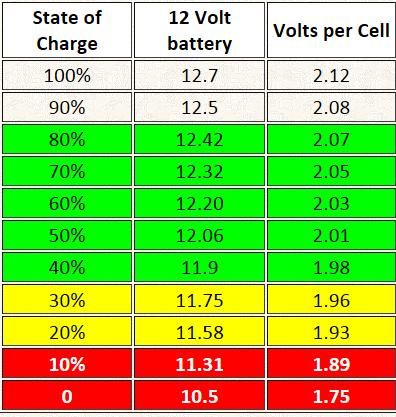Depends on the cable size, Timmo. The aux battery is drawing power from the cable to charge, and cables change their resistance when power passes through them. This change results in a drop in voltage. Thicker cables don't suffer as badly.
Best bet is to get an accurate multimeter (not a needle, a digital) and measure the following voltages:
1) BEFORE you start the car, and after the aux has been uncharged/unused for about an hour: remove the cables from the battery and measure its voltage. This will tell us roughly how full/empty the battery is.
2) BEFORE you reconnect the cables, start the car and measure the voltage at that end of the cable.
3) BEFORE you reconnect the cables after starting the car, measure the voltage on the main battery
4) Connect the aux battery and measure the voltage on the aux battery's terminals again.
There should be next to no difference between 2) & 3), but if 1) is significantly lower than 12.8V, then 4) will be quite revealing about the quality of the cables going to the rear. 4) should drop a little but not significantly, because the voltage should be held up while the current increases (by virtue of the alternator's regulator). With decent cables I'd expect somewhere between a 0.3 to 0.5V drop from front to rear of the car, so with 14.4V up front I'd expect 13.9V at the rear.




